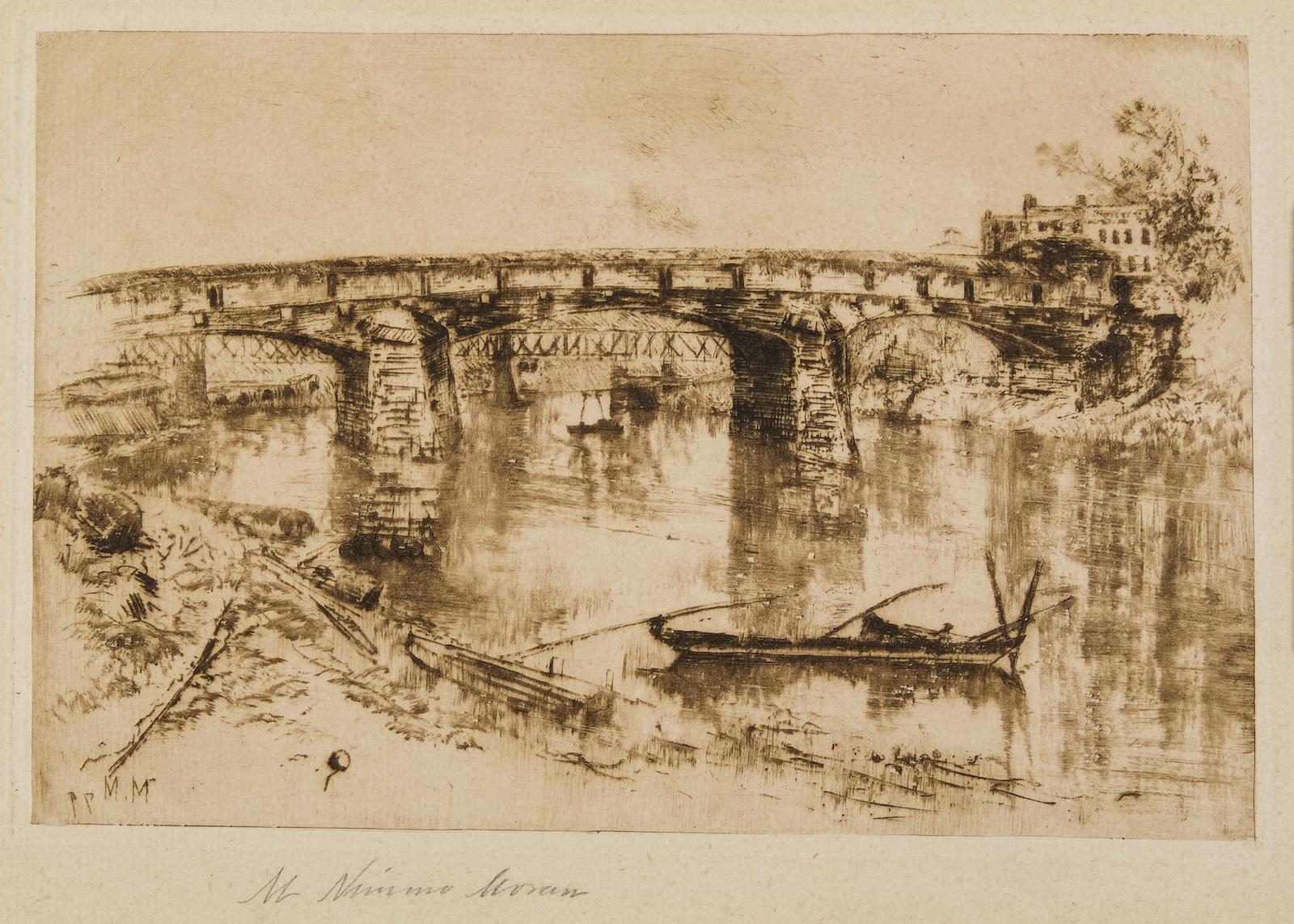Drawing upon the Carter’s deep holdings of work by Moran and his family, as well as other ephemera and visual objects from the era, Thomas Moran’s Mount Superior explores Moran’s broader artistic practice and its relationship to popular conceptions of the West in the late 1870s and early 1880s. While Moran is most often associated with themes of western discovery, this exhibition uses historical photography of railway construction and other documentary materials, including tourist postcards and a novelty stereograph, to craft a sense of place around the creation of Mount Superior and connect Moran’s journey and resulting watercolor to the urban development that was taking place throughout the West at the time. The exhibition also includes several of Peter Moran’s watercolors from the trip, etchings by Thomas and his wife, Mary Moran, and photographs of Panama by Thomas’ older brother John Moran, whose travels, like those of his brothers, aligned with major industrial projects.
“In recounting the circumstances of Moran’s trip, we have a platform to highlight the Carter’s holdings of vernacular imagery, a particular strength of our photography collection,” said Kristen Gaylord, Assistant Curator of Photographs. “Through both their visual depictions and their original intended use, these supporting materials capture the world surrounding Mount Superior, offering fresh perspective on Moran’s cultural significance.”
“Displaying this long-lost watercolor for the first time, the Carter has a unique opportunity to shed new light on an iconic American artist as he forged his place within the rapidly industrializing West,” added Spencer Wigmore, Assistant Curator of Painting, Sculpture, and Works on Paper.
Illustrating the narrative power of the museum’s exceptional archival, photography, and works on paper collections, Thomas Moran’s Mount Superior helps celebrate the Carter’s sixtieth year of collecting, preserving, and exhibiting the finest examples of American art.
Thomas Moran
A renowned painter and etcher, Thomas Moran (1837–1926) is known as one of the premier landscape painters of the 19th century, having made substantial contributions to American cultural history during his 70-year career. Born in Bolton, England, Moran immigrated to the United States in the early 1840s and lived in Philadelphia, PA. He began work as an apprentice at an engraving firm as a teenager and furthered his studies working in the studio of his older brother Edward, an established marine painter. Under Edward’s tutelage, Moran developed a life-long interest in the paintings of English artist J.M.W. Turner, a visual influence that is particularly visible in the iconic watercolors Moran produced after joining Ferdinand Vandeveer Hayden’s 1871 expedition to Yellowstone. These landscapes drew immediate national attention and were praised as instrumental in the passage of the bill that established Yellowstone as the first National Park. Catapulting Moran’s notoriety, Congress purchased his large-scale painting The Grand Canyon of the Yellowstone (1872) to commemorate the legislation, and soon after acquired his oil The Chasm of the Colorado (1873–74) as well. In 1874, Moran completed Mountain of the Holy Cross, a large watercolor that became the artist’s prominent contribution to the Centennial Exposition in Philadelphia in 1876 and is now one of his best-known works uniting themes of wilderness and religion.
During his illustrious career, Moran enjoyed considerable acclaim and exhibited his work at the Royal Academy of Arts, London; the Metropolitan Museum of Art; and the Smithsonian Institute, among other prominent galleries and institutions. Moran traveled extensively during his life, journeying across the United States and Mexico and retracing Turner’s European excursions. Since his death in 1926, Moran’s work has been collected and exhibited widely, solidifying the artist’s place in American history. The Thomas Moran House in East Hampton, NY, was designated a National Historic Landmark in 1965, and in 1997 the National Gallery of Art, Washington, DC, mounted a landmark retrospective of his work. Today, Moran’s works are held in the White House Collection and the permanent collections of the Smithsonian American Art Museum, Washington, DC; the Cooper Hewitt, Smithsonian Design Museum, New York City; and the Amon Carter Museum of American Art, Fort Worth, TX, among many others.






























